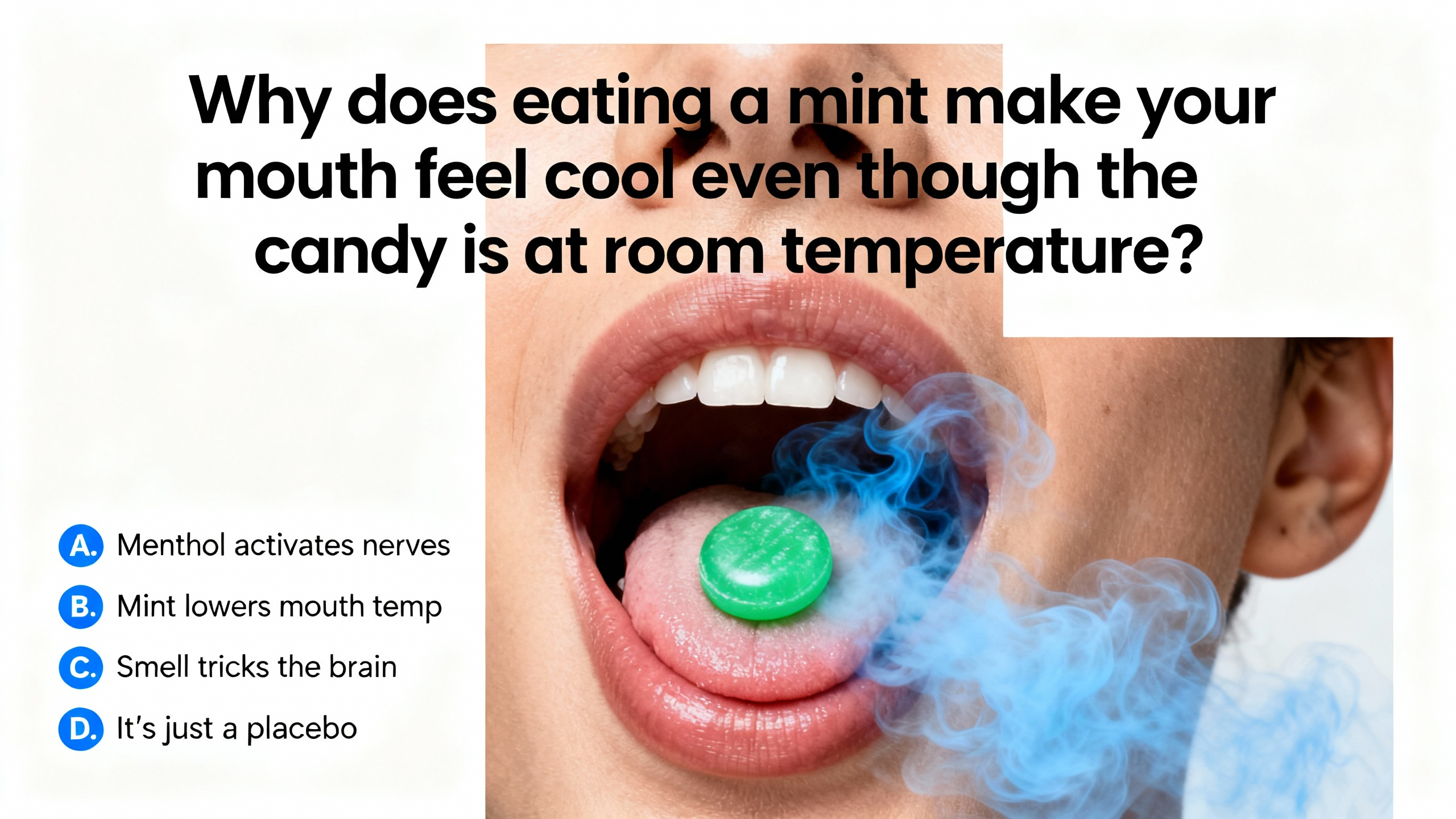The Cooling Sensation of Mints at Room Temperature
The cooling sensation in your mouth when eating a mint at room temperature is mainly due to a compound called menthol. Menthol is a key ingredient in most mints, and it interacts with the sensory receptors in our mouths in a very unique way. 
Our bodies have various types of sensory receptors that can detect different stimuli such as temperature, pain, and touch. Among them, there are specific receptors called TRPM8 receptors, which are thermo - sensitive. Normally, these receptors are activated when they come into contact with cold temperatures. When the temperature drops, the TRPM8 receptors send signals to the brain, and the brain interprets these signals as a feeling of coldness. Menthol has a special molecular structure that can bind to these TRPM8 receptors. Even when the actual temperature of the mint is at room temperature, the menthol in it activates the TRPM8 receptors as if they were exposed to cold. As a result, the brain receives the same kind of signals it would get from cold stimuli and perceives a cooling sensation in the mouth. 
In addition to the interaction with TRPM8 receptors, menthol also has an impact on the nerve endings in the oral cavity. It can reduce the sensitivity of the nerve endings to pain and heat, which further enhances the perception of coolness. When menthol affects these nerve endings, it changes the way they transmit and process sensory information. This alteration in nerve - signal processing contributes to the overall cooling experience. Moreover, the refreshing aroma of menthol also plays a role in the perceived coolness. Our sense of smell is closely linked to our sense of taste, and the minty smell can enhance the psychological perception of coolness, making us feel even colder in the mouth.










